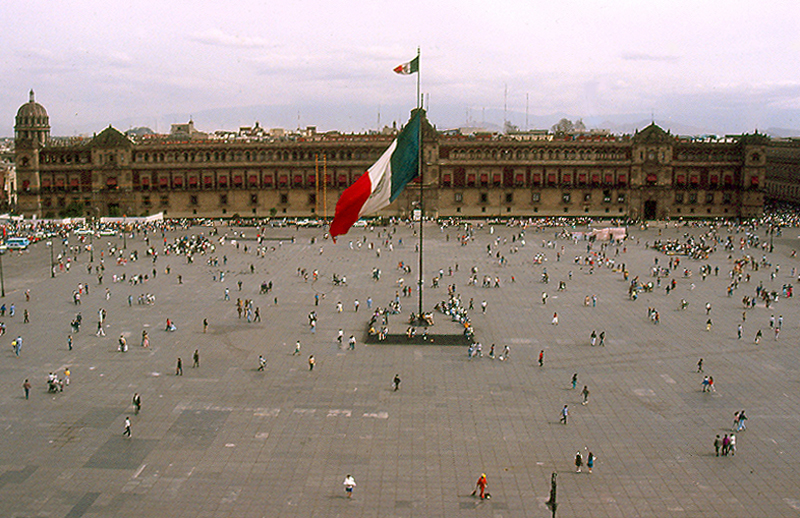
México City (4a) |
 |
|---|
Source: WTL digitized slide photo© on site in Mexico City, 1973. Comments: The Palacio Nacional (national government building), with the national flag of Mexico in the center, was first called the Plaza Mayor, then the Plaza de Armas (Place d'Armes in French, right?). The official name of the square is the Plaza de la Constitución, referring to the liberal Spanish Constitución de Cádiz of 1812. The Spanish word (from Arabic) zócalo refers to the base of a monument; the 19th century monument proposed by General and President Santa Anna was never built, but the word stuck in popular parlance. For a somewhat related 19th century painting in this course, see: => Ejército Triganante / Triumphal Entry. During the Colonial period, this building was the Royal Palace of the viceroys (Real Palacio or Palacio de los Virreyes). Immediately before the Conquest, Moctezuma's palace was were the Palacio Nacional now sits. Basically, the building conforms to the original sense of a medieval fortress, but the overall effect is that of a Neo-Colonial building. The top floor was added in the 1920s. Behind the flagpole is the balcony from which President of the Republic addresses the people of Mexico every Independence Day. In the patio behind the entrance portal on the left are Diego Rivera's famous murals: Epopeya del pueblo mexicano (Epic of the Mexican people). Additional views of the National Palace: See: => Mexico City #04; => Mexico City #04b; => Mexico City #04c. Humanities topic: Compare and contrast this building with these Latin American buildings: => National Palace, Lima; => Palacio Legislativo, Montevideo; => Congresso Nacional, Brasília; and => Palacio Nacional, Guatemala City. |
|---|